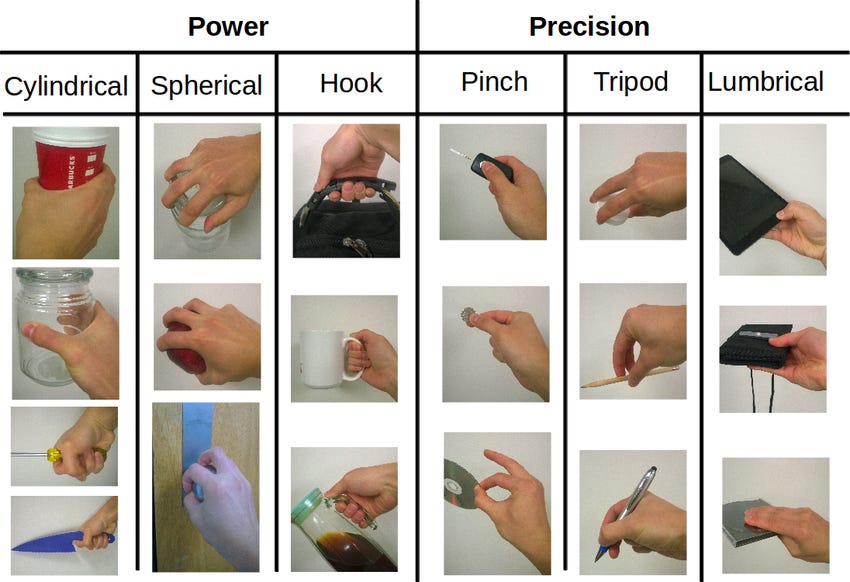Get a grip
Sat,Aug 09, 2025 at 03:02PM by Carla Mullins
Introduction
An improved quality of life is a core component of pilates programming and a major reason why clients return to our classes. Quality of life can be defined by a person’s ability to function and perform daily tasks with ease. Recently, I have noticed a trend of people saying that they are starting to do certain activities now, for example weights and strength loading exercises, so that they can continue doing these activities into their 80s. Weights and strength loading are frequently cited as part of this protocol because they are meant to reduce the frequency of sarcopenia and osteoporosis as we age. I agree that strength is important at all stages of life. However, if we don’t have good function and range in the upper limbs now, we will never achieve the quality of life we desire.
In this article, I will explore the concepts of reach and grasps as it relates to our work with clients who have impacted hands and in our preparation for work in a Pilates studio setting. Strong hands and wrists are foundational in a pilates class and this strength translates into our ability to perform everyday tasks with ease. Consider how you use these body parts in exercises like the plank or elephant, and then think about how these translate into everyday movements like dressing yourself or carrying the groceries. Keep this relationship in mind as we expand on the concepts below.
A quick anatomy overview?
Our hands have small muscles within them (intrinsic muscles) which we use for fine dexterity work. We also have extrinsic muscles in the hands that start in our forearm and cross over the wrist into our fingers, and some on our humerus (extrinsic muscles). Some of the fine intrinsic muscles originate or attach into tendons of the extrinsic muscles. Extrinsic muscles are associated with power of the hand while the intrinsic muscles are associated with dexterity. Extrinsic muscles are commonly overworked leading to tightness and restrictions in the ulnar bone and radial bone. This forearm tightness can be a result of overcompensating for an unstable shoulder girdle. Important muscles of the shoulder girdle, such as the tricep and bicep muscles, cross the elbow and attach to the ulna and radius bones as well. In summary, there is a kinetic chain from the fingers to shoulders, which when working well, supports reach, grasp and dexterity while balancing power and control.
You can observe this important kinetic chain when clients have restrictions in the supination or pronation of their forearms when their elbows are bent. Try it yourself — put your arms flat on a table with your elbow bent, and palm facing the table. Now try and turn your forearm (supinate) so that your palm is facing the ceiling. Can you fully pronate your forearm and hand? Observe the tensions in your arm and shoulder.
Who does this affect?
This affects everyone! We all need good hand and upper limb function to complete everyday tasks. Think about the kinds of activities people engage in on a daily basis like texting, gaming or recreational activities like rock climbing. Rock climbing is a sport that has considerably grown in popularity in recent years. There is substantial evidence that climbing results in soft tissue and bone adaptations in the fingers. The literature provides evidence that these adaptations increase over the career of elite climbers (Paster et al, 2022). There are also increased incidences or reported stress fractures in the hands of adolescent climbers (Lutter et al, 2017).
There are of course some people who have injuries or conditions that compound problems in their hands e.g. various arthritic conditions and neurological conditions e.g. post stroke.
A taxonomy of grasp?
There are several grasps frequently used in our daily lives including:
- Cylindrical – e.g. grabbing a reformer spring and changing this on the reformer
- Spherical – e.g. holding your hands to pick up a ball or open a jar
- Hook – e.g. carrying your shopping bags, holding onto kettlebells
- Pinch (pincer) – e.g. doing up buttons or using a clip on your reformer straps
- Tripod – e.g. holding a pen to write
- Lumbrical – e.g. holding your phone
All of these grips are essential for manipulating objects needed for functional activities whether that be dressing, feeding or typing. When our fingers, wrists and hands do not function properly, basic activities can become difficult. Think of how hard it would be to do up buttons and dress yourself if you could not form a pincer grip with your fingers. Consider the implications of carrying your shopping if your fingers were not able to manage a hook grasp. Many of the power grasps are needed for weight lifting (cylindrical and spherical) or lifting kettlebells (hook grasp). Improving our strength and load begins with our hands and shoulders. We must work on supporting proximal organisation and distal mobility.

Types of Grasp (Yang et al., 2015)
What do we have to consider when working with grasp?
When building strength in our hands and fingers for improved grasp, we have to remember the anatomical relationships between our fingers, wrists, forearms and shoulders.
 0
0 